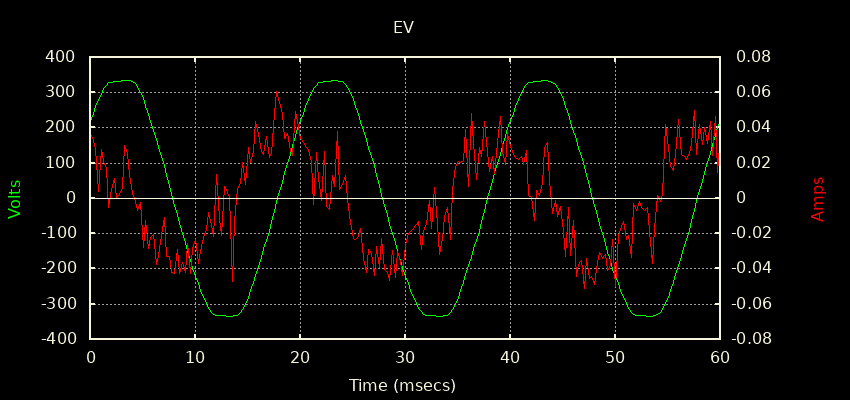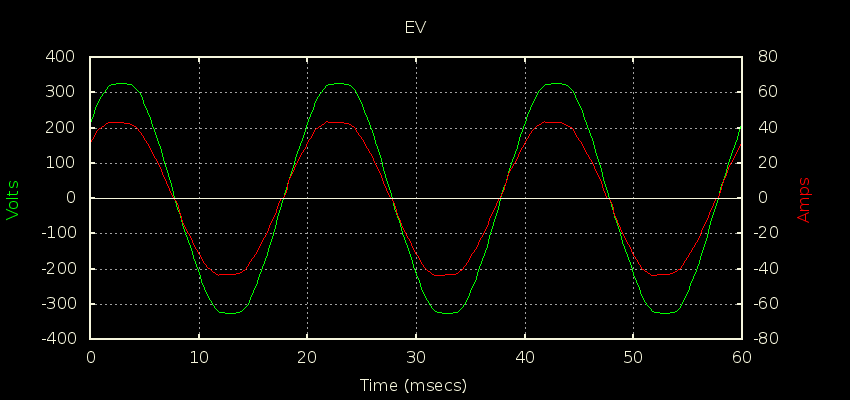We have the same set up here in Aus, in Qld it’s known as the T33 Controlled Load meter. I have 3 circuits hanging off that: pool, hotwater and EVSE. I too want to log when it’s energised and took a slightly different approach.
I have a CT on each of those 3 circuits. Happily, two of them (the pool and the EVSE) have a reasonably reactive current draw while in standby. I settled for the EVSE circuit as it has the strongest signature. It draws 27mA while not charging - it’s virtually all reactive so not costing me anything just sitting there blinking its LED waiting for me to plug the car in.
That drops to 10mA of noise when the ripple controller shuts those circuits off:
Those two spikes are cross-talk from a nearby circuit (3600W hot water element) but the important thing is it’s easy to see whether or not the circuit is energised thanks to the reactive power draw.
I then use some simple logic to drive an emoncms LED:
//
// EVSE draws at least 20mA (more like 26mA) but with breaker off circuit reads about 10mA,
// so use 20mA threshold to determine if T33 is currently enabled. ERM reports in 10^-5A
//
t33_led = (I_rms[3] > 2000) ? LED_GREEN : LED_GREY;
I then use that feed to log the T33 voltage:
That looks like I have a dedicated voltmeter on the T33 meter but I cheat. The house is single phase, so there is only one voltage and T33 is either off or on. So knowing the numeric value of the emoncms LEDs (Green is 1, Grey is 2) I do some feed maths to turn it into a 0 or 1 and use that to gate to the actual voltage measurement the whole house is using:
So, if you were planning on adding energy monitoring, and you can confirm you have at least one load on your ripple controller that has a measurable standby current, and your energy monitor has enough dynamic range, you might be able to sense the controlled load status for free.
Compare that waveform above with the equivalent when it is charging the car at 32A:
Measuring 27mA all the way to 32A needs a dynamic range of about 1000:1. I wouldn’t like to bet my 27mA measurement is accurate - I just need to be able to discern it from the 10mA reading I see when the power is off. My front end monitor is a fair bit more sensitive than the OEM kit and uses 24-bit ADCs. The EVSE circuit uses a 50A/333mV so 27mA represents 180uV at the input, Vs 66uV when it drops to 10mA - so you can see why it’s prone to picking up noise when other nearby circuits come on. The good news is those circuits are also on the ripple controller, so unlikely to impact the result.
@Robert.Wall is probably well placed to comment on whether the OEM kit is likely up to the task.





